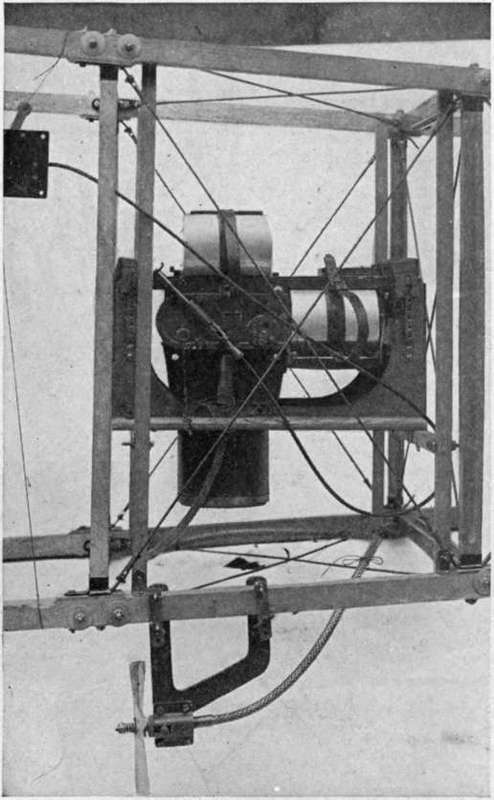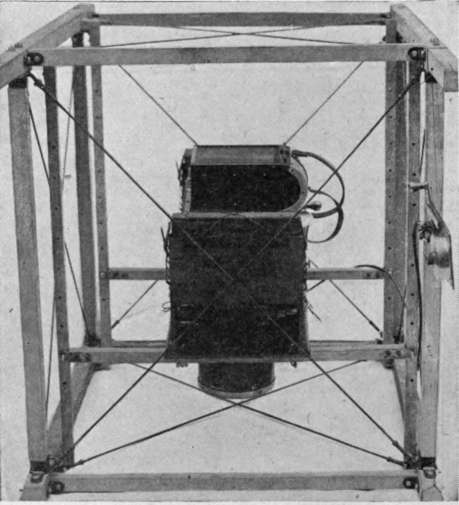Tennisball Mounting
Description
This section is from the book "Airplane Photography", by Herbert E. Ives. Also available from Amazon: Airplane photography.
Tennisball Mounting
A very simple mount used by the French consists of a frame enclosing the nose of the 84 show an American L camera cradle based on the design of the English L camera tray. Thick sponge rubber pads support the two ends of the camera top plate, and additional pads are provided to hold the nose of the camera. Careful camera, and carrying four tennis balls, on which the whole weight rests (Fig. 40). If the center of support is in the plane of the center of gravity and if the four balls are of uniform age and elasticity, this form of support is good. As provided by the camera manufacturer, the tennis ball frame fits much too far down on the camera. Another application of the tennis ball idea was frequently made in the French service, in which the balls were close up under the shutter housing (Fig. 85). Additional support was, however, given to the camera nose by flexible rubber bands, the success of the whole being largely a matter of the adjustment of the tension on the bands.

Fig. 83. - "L" camera and cradle mount in skeleton DeHaviland 4 fuselage, side view.

Fig. 84. - " L" camera and cradle mountin skeleton deHaviland 4 fuselage, front view.
Continue to:
Tags
camera, lens, airplane, aerial, film, exposure, photography, maps, birdseye
